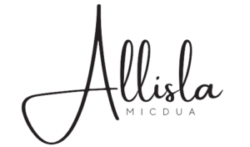In the rapidly evolving landscape of artificial intelligence, the significance of maintaining accurate and comprehensive change-logs cannot be overstated. AI change-logs serve as a vital record of modifications made to algorithms, models, and systems, documenting every alteration in a structured manner. This documentation is not merely a bureaucratic necessity; it is an essential tool for understanding the evolution of AI systems, ensuring accountability, and facilitating compliance with regulatory standards.
As organizations increasingly rely on AI technologies, the need for meticulous change-logs becomes paramount, particularly in regulated industries where oversight and transparency are critical. The introduction of AI change-logs marks a pivotal shift in how organizations approach the development and deployment of AI systems. These logs provide a chronological account of changes, including updates to data sets, algorithm adjustments, and performance metrics.
By capturing this information, teams can trace the lineage of their AI models, enabling them to understand the impact of specific changes on outcomes. This level of documentation not only aids in troubleshooting and refining AI systems but also fosters trust among stakeholders who require assurance that these technologies operate within established ethical and regulatory frameworks.
Key Takeaways
- AI change-logs track and document changes made to AI systems, providing a transparent record of modifications.
- Documentation is crucial for regulated teams to ensure compliance with industry standards and regulations.
- Audit-proof documentation is essential for demonstrating accountability and transparency in regulated environments.
- AI change-logs play a key role in maintaining compliance with regulatory standards and demonstrating adherence to guidelines.
- Best practices for creating AI change-logs include thorough documentation of changes, timestamping, and clear explanations of modifications.
Importance of Documentation for Regulated Teams
For teams operating within regulated environments, the importance of thorough documentation cannot be overstated. Regulatory bodies often impose stringent requirements on organizations to ensure that their processes are transparent and accountable. In this context, documentation serves as a safeguard against potential compliance issues, providing a clear record of actions taken and decisions made throughout the development lifecycle.
This is particularly crucial in industries such as healthcare, finance, and pharmaceuticals, where the consequences of non-compliance can be severe. Moreover, effective documentation practices empower teams to maintain consistency and quality in their work. By documenting processes, methodologies, and changes, teams can create a shared knowledge base that facilitates collaboration and reduces the risk of errors.
This is especially important in regulated environments where multiple stakeholders may be involved in the development and oversight of AI systems. A well-maintained documentation system not only enhances operational efficiency but also instills confidence among regulators and clients that the organization adheres to best practices.
Understanding Audit-Proof Documentation

Audit-proof documentation refers to records that are not only comprehensive but also resistant to manipulation or misinterpretation. In regulated industries, where audits are commonplace, having audit-proof documentation is essential for demonstrating compliance with legal and ethical standards. This type of documentation must be meticulously organized, easily accessible, and capable of providing a clear trail of evidence regarding decisions made throughout the AI development process.
To achieve audit-proof status, documentation should include detailed descriptions of changes made to AI systems, including the rationale behind each modification. It should also encompass information about testing protocols, validation processes, and performance evaluations. By ensuring that all relevant data is captured and presented in a coherent manner, organizations can effectively defend their practices during audits and inspections.
This level of diligence not only protects the organization from potential penalties but also reinforces its commitment to ethical AI development.
The Role of AI Change-Logs in Regulated Environments
AI change-logs play a crucial role in regulated environments by providing a structured framework for documenting modifications to AI systems. These logs serve as a historical record that can be referenced during audits or compliance checks, offering transparency into the decision-making processes that led to specific changes. In industries where accountability is paramount, such as finance or healthcare, having a reliable change-log can mean the difference between regulatory approval and significant penalties.
Furthermore, AI change-logs facilitate communication among team members and stakeholders by providing a clear overview of what changes have been made and why. This transparency fosters collaboration and ensures that everyone involved in the project is on the same page regarding the current state of the AI system. In regulated environments where multiple departments may need to coordinate their efforts, having an accessible change-log can streamline communication and enhance overall project efficiency.
Best Practices for Creating AI Change-Logs
Creating effective AI change-logs requires adherence to several best practices that ensure clarity, consistency, and comprehensiveness. First and foremost, organizations should establish a standardized format for documenting changes. This format should include key elements such as the date of the change, a description of the modification, the individual responsible for implementing it, and any relevant testing or validation results.
By maintaining a uniform structure, teams can easily navigate change-logs and quickly locate specific entries when needed. Additionally, organizations should prioritize regular updates to their change-logs. It is essential to document changes as they occur rather than waiting until project milestones are reached.
This proactive approach not only ensures that records remain current but also minimizes the risk of overlooking critical modifications. Furthermore, teams should consider implementing version control systems that allow for tracking changes over time, providing an additional layer of accountability and traceability.
Ensuring Compliance with Regulatory Standards

Compliance with regulatory standards is a fundamental concern for organizations operating in heavily regulated industries. To ensure adherence to these standards, organizations must integrate their AI change-logs into broader compliance frameworks. This involves aligning documentation practices with specific regulatory requirements while also considering industry best practices.
One effective strategy for ensuring compliance is to conduct regular audits of change-logs to verify their accuracy and completeness. By periodically reviewing these records against regulatory guidelines, organizations can identify any gaps or discrepancies that may need to be addressed. Additionally, involving compliance officers or legal experts in the documentation process can provide valuable insights into regulatory expectations and help teams navigate complex compliance landscapes.
Implementing Transparency and Accountability with AI Change-Logs
Transparency and accountability are essential components of responsible AI development. By implementing robust change-logs, organizations can enhance both aspects significantly. Change-logs provide stakeholders with visibility into the decision-making processes behind AI modifications, fostering trust in the technology being deployed.
Moreover, accountability is reinforced when teams understand that their actions are documented and subject to review. This awareness encourages individuals to take ownership of their work and consider the implications of their decisions on the overall project. In regulated environments where scrutiny is high, fostering a culture of accountability through transparent documentation practices can lead to improved outcomes and greater stakeholder confidence.
Addressing Security and Privacy Concerns
As organizations increasingly rely on AI technologies, security and privacy concerns become paramount considerations in the development process. AI change-logs must be designed with these concerns in mind to protect sensitive information while still providing necessary transparency. Organizations should implement access controls to ensure that only authorized personnel can view or modify change-logs.
Additionally, it is crucial to anonymize any personal data included in change-logs to comply with privacy regulations such as GDPR or HIPABy taking proactive measures to safeguard sensitive information while maintaining comprehensive documentation practices, organizations can strike a balance between transparency and privacy protection.
Integrating AI Change-Logs into Existing Documentation Processes
Integrating AI change-logs into existing documentation processes requires careful planning and execution. Organizations should assess their current documentation practices to identify areas where change-logs can be seamlessly incorporated. This may involve updating existing templates or workflows to accommodate new logging requirements.
Furthermore, teams should consider leveraging technology solutions that facilitate the creation and management of change-logs. Document management systems or project management tools can streamline the process by automating certain aspects of logging changes while ensuring compliance with established standards.
Training and Education for Teams on AI Change-Logs
To maximize the effectiveness of AI change-logs, organizations must invest in training and education for their teams. Providing comprehensive training on best practices for creating and maintaining change-logs ensures that all team members understand their importance and how to implement them effectively. Training sessions should cover topics such as standardized formats for documentation, compliance requirements, and strategies for addressing security concerns.
Additionally, ongoing education initiatives can help teams stay informed about evolving regulatory landscapes and emerging best practices in AI documentation.
The Future of AI Change-Logs in Regulated Industries
As artificial intelligence continues to permeate various sectors, the role of AI change-logs will only become more critical in regulated industries. The need for transparency, accountability, and compliance will drive organizations to adopt robust documentation practices that include comprehensive change-logs as standard operating procedure. Looking ahead, advancements in technology may further enhance the capabilities of AI change-logs by integrating automated logging features or utilizing machine learning algorithms to analyze changes over time.
As organizations navigate an increasingly complex regulatory environment, embracing these innovations will be essential for maintaining compliance while fostering trust among stakeholders. In conclusion, AI change-logs represent a vital component of responsible AI development in regulated industries. By prioritizing thorough documentation practices, organizations can ensure accountability, enhance transparency, and ultimately contribute to the ethical advancement of artificial intelligence technologies.
FAQs
What are AI Change-Logs?
AI Change-Logs are documentation that track and record any changes made to artificial intelligence systems, including updates, modifications, and revisions.
Why are AI Change-Logs important for regulated teams?
AI Change-Logs are important for regulated teams because they provide a transparent and auditable record of all changes made to AI systems. This is crucial for compliance with regulations and standards in industries such as healthcare, finance, and aviation.
How do AI Change-Logs help in keeping documentation audit-proof?
AI Change-Logs help in keeping documentation audit-proof by providing a detailed history of changes made to AI systems, including who made the changes, when they were made, and the reasons for the changes. This level of transparency and accountability is essential for passing regulatory audits.
What are the benefits of using AI Change-Logs for regulated teams?
The benefits of using AI Change-Logs for regulated teams include improved compliance with regulations, enhanced transparency and accountability, and the ability to demonstrate a clear audit trail of AI system changes.
What are some best practices for maintaining AI Change-Logs?
Some best practices for maintaining AI Change-Logs include documenting all changes in a consistent and standardized format, regularly reviewing and updating the logs, and ensuring that all relevant stakeholders have access to the logs. Additionally, it is important to clearly define roles and responsibilities for maintaining the logs.



